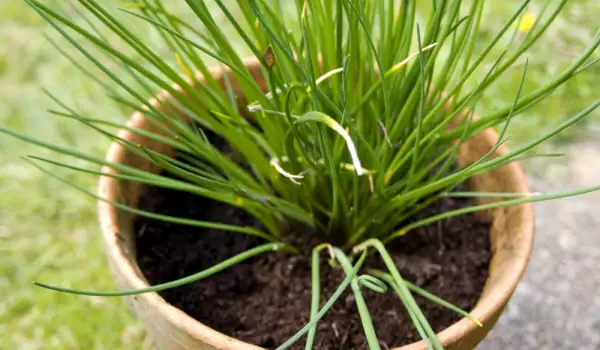Chives are a plant with scented leaves and a very fine and delicate onion taste. It is especially used for seasoning salads and certain dishes. The good thing about it is that it can be grown at home.
Chives' flavorful leaves reach heights of up to 19 3/4″ (50 cm). It is suitable for growing both in the garden, as well as in a pot. The care required is identical to that for plain onions. It can be eaten directly, dried or frozen.
Only the thin green stalks of Chives are used. Its purple-yellow flowers are also edible, most often used as decoration for dishes. They cannot handle heat treatment due to their delicate structure, which is why they are put in dishes before serving.
Growing chives is extremely easy. Dryness and humidity do not affect it much and it rarely suffers from plant diseases and pests. However, it grows best in sunny places, in well-drained soil, rich in nutrients.

If you want to grow chives at home yourself, cut off the bulb during spring and plant it in a pot. Chives also reproduce through seeds. If you plant the seeds, a small plant will grow during the first year, with a few to 30-40 leaves.
During the second year, the chives will begin to have offshoots. Each offshoot will produce new offshoots, forming a thick tuft with a shared base.
Chives' leaves develop early in spring. They are densely packed, ending in spherical purple-yellow inflorescences. The plant can remain for 2 - 3 years in the same spot. During the vegetation period, a few harvests can be obtained. With time, the chives begin to decline.

Chives do not bloom if the stalks are regularly pruned. It is best to keep them in a pot on the porch, since they love sunny areas. It requires well-drained soil.
Even though it is a drought-resistant plant, chives must be watered regularly in order to develop their beautiful and juicy leaves, much valued by chefs.
Despite that it rarely suffers from diseases or pests, cats do not leave it alone, that's why it must be well-protected in the garden and washed thoroughly before eating.


















